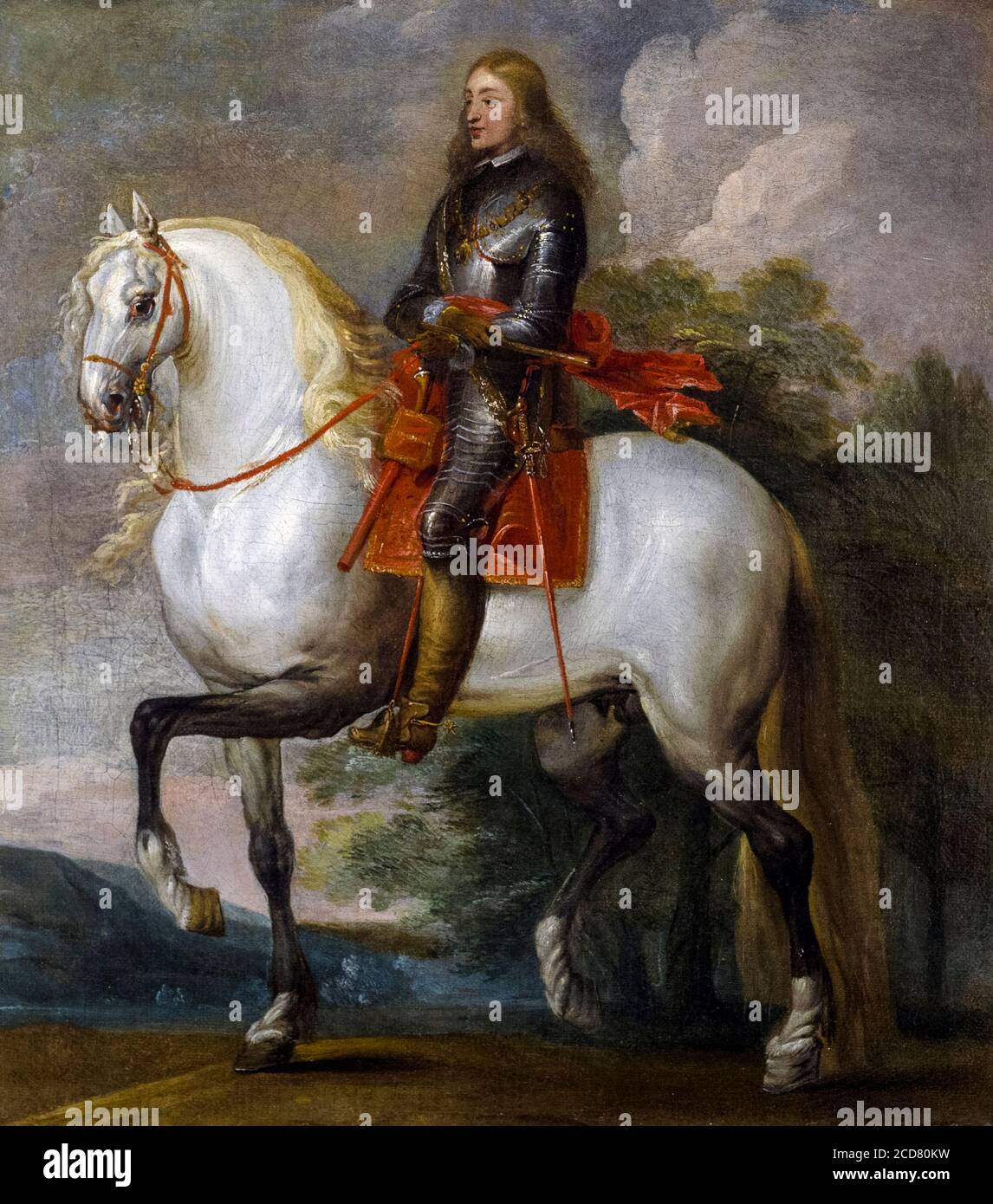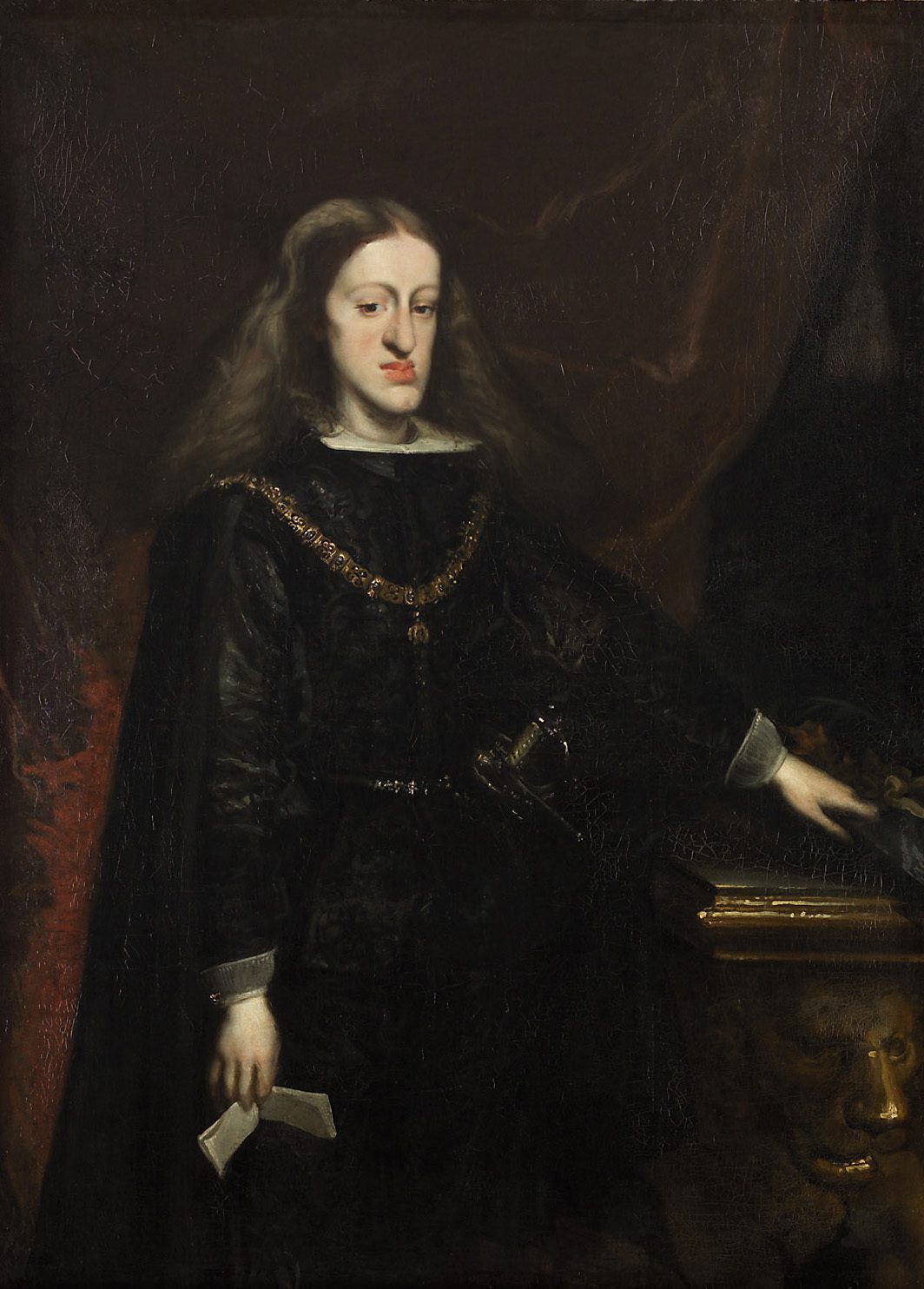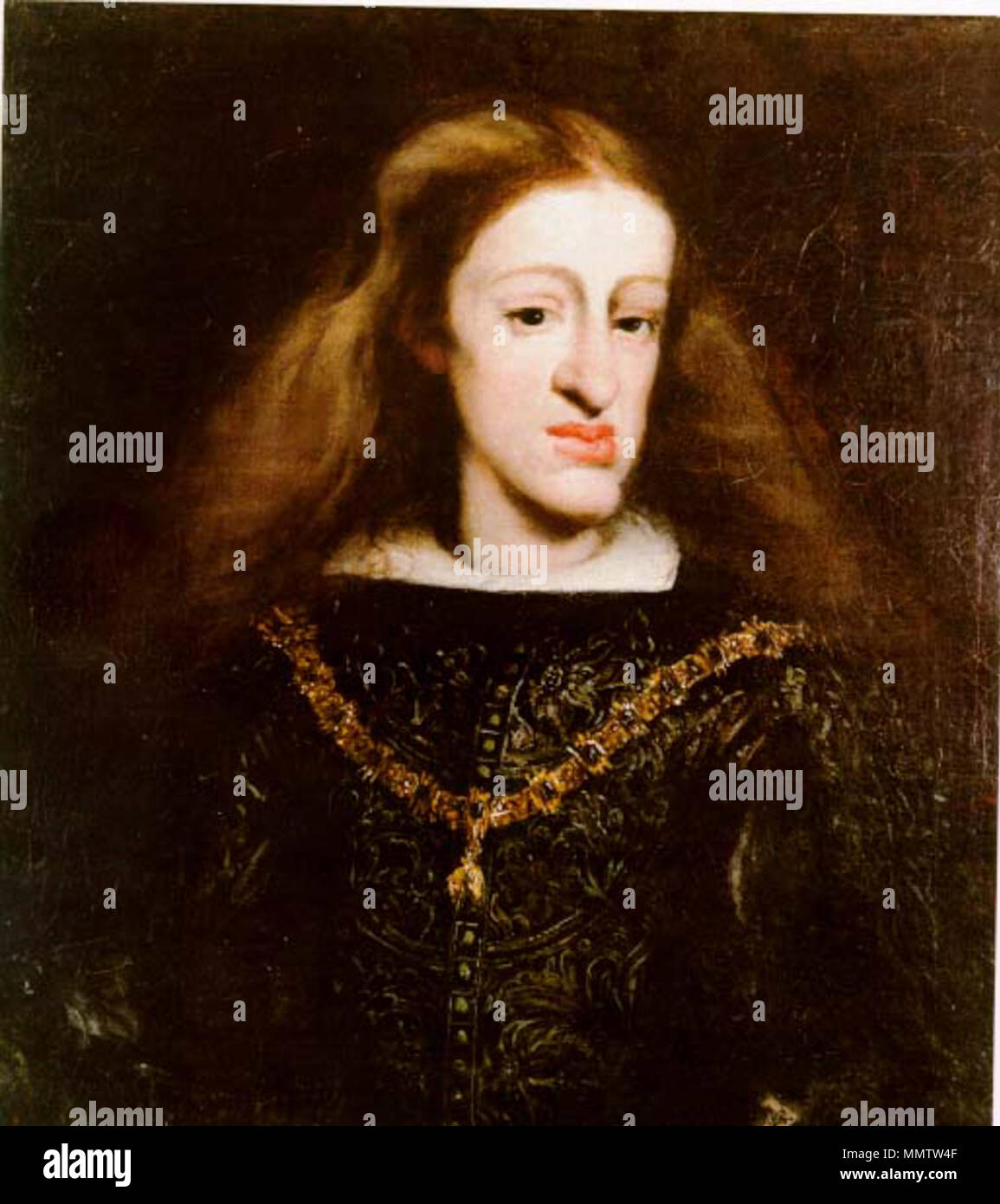Charles II Of Spain - A Royal Story
Imagine a time when the fate of an entire country rested on one person, a king whose very existence was, in a way, a puzzle. This is the tale of Charles II of Spain, a monarch whose life was, you know, shaped by circumstances far beyond his choosing. He was the last of a powerful family line, one that had held sway over Spain for many, many years, stretching all the way back to 1516.
His story is, quite honestly, a bit heartbreaking, filled with personal difficulties and big political issues. Born into a family where certain traditions had, shall we say, some unexpected consequences, Charles faced a lifetime of health troubles. These difficulties weren't just personal; they actually had a huge impact on his rule and, in some respects, on the future of Spain and even the rest of Europe. It's almost as if he carried the weight of generations on his shoulders.
So, as we look back at his time, we'll get to know Charles II, the man behind the crown, and discover how his life, his challenges, and even his passing led to big changes across the continent. We'll explore his personal journey, the state of Spain during his rule, and the way his story became, well, a significant part of history. It's really quite a fascinating look at a time long past.
Table of Contents
- The Life of Charles II of Spain - A Biographical Sketch
- What Challenges Did Charles II of Spain Face?
- How Did Charles II of Spain's Health Affect His Reign?
- What Happened After Charles II of Spain Died?
The Life of Charles II of Spain - A Biographical Sketch
Charles II, born on November 6, 1661, in the Royal Alcázar of Madrid, was, in a way, a very important baby. His arrival was seen as a continuation of the Habsburg family line in Spain, which was a pretty big deal at the time. He was the only son of King Philip IV of Spain and his second wife, Mariana of Austria. Interestingly enough, Mariana was also Philip's niece, which was, you know, a common practice among royal families back then, though it would have some lasting effects.
When his father, Philip IV, passed away in 1665, Charles became king at the very young age of four. This meant that for quite a while, his mother, Mariana, acted as the ruler for him, a period known as a regency. She had a lot of influence during this time, and it's said that her government was, in fact, quite influenced by her confessor, an Austrian Jesuit. Charles officially reigned until his own passing on November 1, 1700, also in Madrid. He was, as a matter of fact, the last monarch from the House of Habsburg to sit on the Spanish throne, a family that had been in charge of Spain since 1516.
His time as king, from 1665 to 1700, was, you know, a period filled with a good many difficulties for Spain. There were various wars, and the country saw its share of natural disasters. Even with all that, there were still attempts at reforms in Spain and its far-off colonies. His life, in short, was a mix of personal struggles and the heavy responsibilities of leading a nation during what was, arguably, a rather challenging period in European history.
Personal Details - Charles II of Spain
Here are some quick facts about King Charles II of Spain:
| Detail | Information |
|---|---|
| Full Name | Charles II (Carlos II) |
| Born | November 6, 1661, Madrid, Spain |
| Died | November 1, 1700, Madrid, Spain |
| Reign | 1665 – 1700 |
| Father | Philip IV of Spain |
| Mother | Mariana of Austria (his niece) |
| Nickname | El Hechizado (The Bewitched/Hexed One) |
| Dynasty | House of Habsburg |
What Challenges Did Charles II of Spain Face?
Charles II's life was, to be honest, marked by a good many difficulties from the very start. He was born into a family where, as we mentioned, marriage within the same extended family was a common practice among the nobility. This practice, however, had some very sad and lasting consequences for him. He suffered from various health issues and physical problems that, you know, were passed down through generations of his family. It was almost as if his family history was written on his very body.
Beyond his personal health, Charles also had to deal with a country that was, in some respects, going through a tough time. There was a lot of disagreement and division among different groups in Spain, which made it hard to get things done. He also faced many challenges from other countries, his enemies, who were, like, always looking for an opportunity to gain an advantage. His rule was, therefore, shaped by a constant need to manage these internal disagreements and external threats, which must have been quite a burden.
It's important to remember that his physical and, arguably, mental weakness made these challenges even harder to overcome. He was, in a way, at a disadvantage from the beginning, trying to lead a country while struggling with his own well-being. This combination of personal hardship and political pressure created a very difficult situation for him as a ruler, and it really did shape the fate of his country during his time.
The Weight of a Family Tree - Charles II of Spain's Ancestry
The Habsburg family, which Charles II of Spain belonged to, was, you know, known for keeping their bloodline "pure" by marrying within their own relatives. This practice, while common among European royalty to maintain power and property, had a devastating effect on Charles. He was, for example, the only surviving son of Philip IV and Mariana of Austria, who was his father's niece. This close family relationship meant that Charles inherited a good many genetic problems.
The impact of this close-knit family tree was, in fact, quite clear in Charles's appearance and health. He suffered from a range of issues, including what's often called the "Habsburg jaw," which was so pronounced that it made it very hard for him to eat and even speak clearly. He was also, apparently, quite short for his age. Doctors of the time, and historians looking back, have pointed to several specific conditions, like combined pituitary problems, that contributed to his overall frail health and difficulties. It was, in short, a very heavy burden to carry, being the last of a powerful line that had, in a way, destroyed itself through its own traditions.
How Did Charles II of Spain's Health Affect His Reign?
Charles II's health issues weren't just personal problems; they had a pretty significant impact on his ability to rule and, in a way, on the stability of Spain itself. Because of his various disabilities and overall physical weakness, he was often seen as not being strong enough to be a truly effective king. This perception, you know, led to more factionalism within the court, as different groups tried to gain influence and control, knowing the king himself might not be able to fully assert his authority.
His health problems also meant that he often needed others to make decisions for him, especially during his younger years under his mother's regency. Even as an adult, his physical state probably made it harder for him to engage fully in the daily business of running a country. This lack of a strong, decisive hand at the top could, arguably, contribute to a sense of decline in the Spanish Empire during his reign. It was, therefore, a time when Spain faced many internal and external pressures, and the king's health was, unfortunately, a constant factor in all of it.
It's interesting to consider that even the painters of his time, who usually made their subjects look, you know, much nicer than they actually were, couldn't completely hide his physical features. If you look at the paintings, he was, quite honestly, not a very handsome guy. This visual evidence further highlights the extent of his physical challenges, which must have made his life as a public figure and a monarch even more difficult. He was, in a way, a very visible symbol of the struggles his family faced.
The "Bewitched" King - Charles II of Spain's Nickname
Charles II was, perhaps, best known by his rather unusual nickname: "El Hechizado," which translates to "The Bewitched" or "The Hexed One." This name, you know, came about because people at the time struggled to understand the cause of his severe deformities and various ailments. They simply couldn't explain why he was so frail and different, so some believed he must have been under a spell or hex. It was, in a way, a reflection of the medical knowledge (or lack thereof) of the period.
This nickname, however, also points to the very real and visible struggles Charles II of Spain endured. His pronounced lower jaw, a hallmark of the Habsburg family, made it, apparently, quite difficult for him to eat and speak. Beyond that, he suffered from a range of other health problems that left him physically weak. This combination of visible differences and constant illness made him a figure of both pity and, perhaps, a little fear for some of his subjects. His physical condition was, truly, a defining aspect of his public persona and his private suffering.
What Happened After Charles II of Spain Died?
Charles II's passing on November 1, 1700, was, you know, a moment of immense significance for Europe. The biggest reason for this was that he died without leaving behind an heir, a direct child to take his place on the throne. This created a huge problem because the Spanish throne was one of the most powerful positions in Europe, controlling vast territories and riches. The lack of a clear successor meant that several powerful European countries, each with their own claims and interests, immediately began to argue over who should rule Spain next. It was, basically, a powder keg waiting for a spark.
For reasons that are, arguably, still debated by historians, Charles had experienced a lifetime of physical and mental weakness, which also contributed to his inability to produce an heir. This personal tragedy had, in fact, enormous political consequences. His death, without a doubt, directly triggered a major European conflict that would become known as the War of the Spanish Succession. This war, fought between 1701 and 1714, involved many of the continent's major powers, all vying for control or influence over the vast Spanish Empire. It was, in short, a very big deal that reshaped the political landscape of Europe for years to come.
The war eventually ended the long reign of the Habsburg dynasty in Spain, which had ruled since 1516. Charles II was, therefore, the very last monarch from that family to hold the Spanish crown. His life, his marital problems, and his succession crisis were, quite simply, pivotal events that shaped the fate of Spain and had a lasting impact on the balance of power across Europe. It's a story that really shows how one person's life, even with all its personal difficulties, can have such far-reaching effects on history.
A Throne Without an Heir - The Succession Crisis of Charles II of Spain
The central issue following Charles II of Spain's passing was, very simply, that he had no children to inherit his crown. This created a significant "succession crisis" because the Spanish Empire was, you know, a massive prize. It was not just Spain itself, but also its extensive colonies and territories across the world. The question of who would sit on the Spanish throne was, therefore, a matter of great concern for all of Europe's leading nations, as it would drastically change the power dynamics.
Because Charles II of Spain passed away childless, the major European powers immediately began to assert their claims to the throne. These claims were based on various family connections and political alliances. The resulting conflict, the War of the Spanish Succession, was, in some respects, a long and brutal struggle that involved much of the continent. It wasn't just about who would rule Spain; it was also about preventing any one country from becoming too powerful by inheriting such a vast empire. The war, which lasted for over a decade, really did redefine the political map of Europe and, as a matter of fact, brought the long rule of the Habsburg family in Spain to a definitive end.
So, the life of Charles II of Spain, the last Habsburg king, was a story of personal hardship and a pivotal moment in European history. He suffered from the effects of generations of close family marriages, leading to various health challenges and physical difficulties that earned him the nickname "The Bewitched." His reign was marked by struggles within Spain and with other countries. Ultimately, his passing without an heir set off a major European conflict, the War of the Spanish Succession, which changed the course of history and ended his family's long rule in Spain.

Charles II of Spain (1661-1700), (Carlos II of Spain), equestrian

King Charles II of Spain, Bewitched and Misunderstood | OddFeed

King charles ii spain hi-res stock photography and images - Alamy